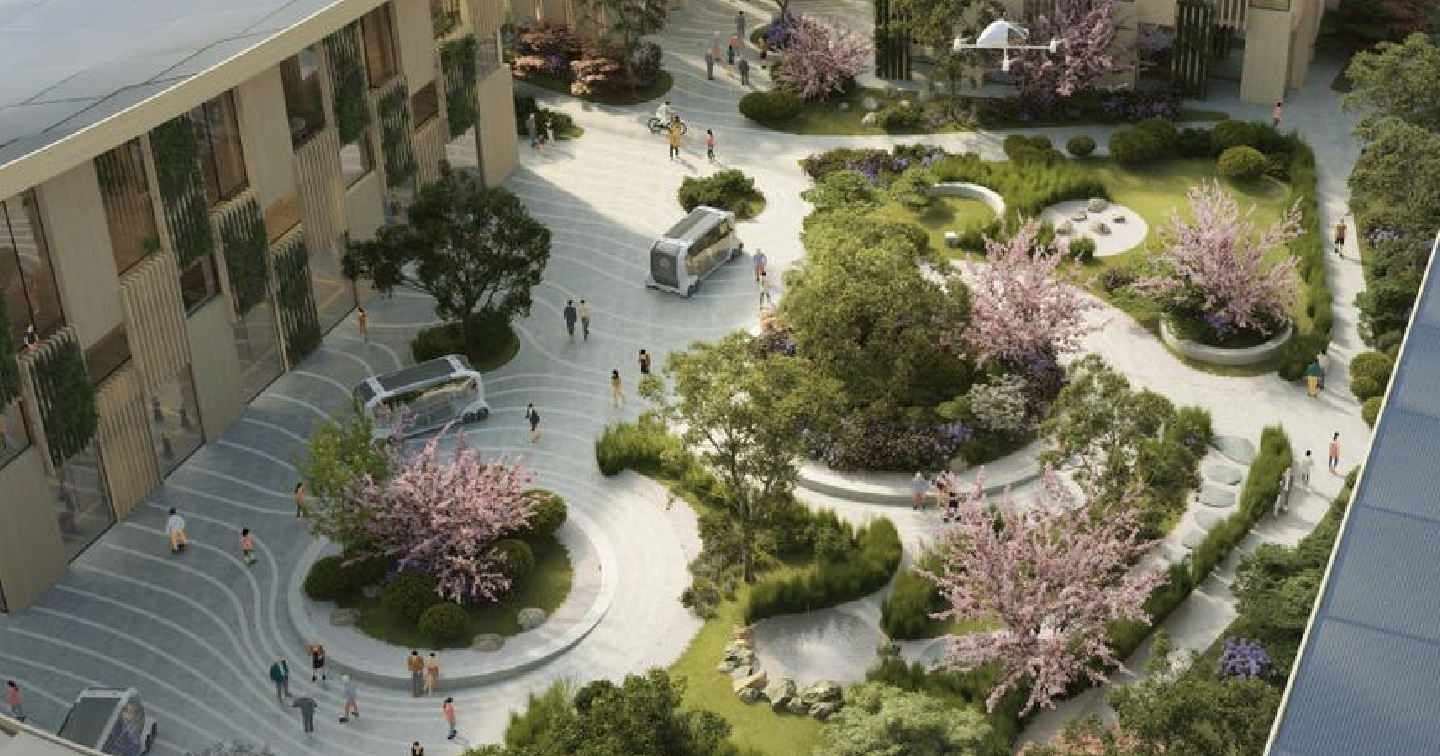Woven City: Toyota is turning the old plant into the city of the future

Ninety kilometres from the Japanese capital, Tokyo, near the famous Mount Fuji, Toyota Motor Corporation is building something huge. It is a modern, innovative city with an area of about 700,000 m2, which will be built from scratch.
Innovation and uniqueness of the Woven City will be provided by technologies implemented during its construction. Here are a few facts:
- the Japanese city of the future will function solely on clean energy: solar and hydrogen energy;
- when building houses, mostly wood will be used, which will minimize the carbon footprint;
- houses will be equipped with robotics, artificial intelligence technologies and other systems that will check the health of residents, take care of their basic needs and improve daily life;
- the city will be covered with native vegetation and hydroponics, a method of growing plants without soil;
- a central park and a meeting place for the local community will be built on the territory;
- individual transport, such as bicycles or electric scooters, as well as unmanned electric vehicles will be available for transportation in the city – i.e. only environmentally friendly transport will be used.
Woven City should become a “laboratory” for the development of technologies that aim is to improve the quality of people’s lives and solve social problems. Innovations in the field of robotics, artificial intelligence, unmanned vehicles, the smart home will be tested here.
"Building a complete city from the ground up, even on a small scale like this, is a unique opportunity to develop future technologies, including a digital operating system for the city’s infrastructure," said Toyota President Akio Toyoda.
People, buildings, vehicles in the city will be connected by data and sensors.
Location and social issue
Woven City is located on the territory of the former Toyota Higashi-Fuji plant. The car production ended here on December 9, 2020.
“Woven” is because the first product released by Toyota was an automated loom. Another clue about the name chosen for the future city is in the description of street infrastructure. Thus, in Woven City it is planned to build three types of streets: for fast vehicles, exclusively for pedestrians, and for individual vehicles (bicycles, scooters) and pedestrians at the same time.
According to the authors, all three types of streets will be interwoven with each other and will form an organic grid pattern, the viability of which will be tested on the ground. An underground road for cargo transportation will also be built.
The intention of the Japanese: to catch up with the trends that prevail in the field of transport, and to offer the urban infrastructure of the future (in official communication, Toyota announces the transition from the concept of a car corporation to the concept of “mobility company” – ed.). At the same time, Toyota’s e-Palettes unmanned electric vehicles will be tested and used for transportation, delivery and mobile retail throughout the city.
At the initial stage of implementation, 360 enthusiasts will move to Woven City: inventors, young families with children, senior citizens. In the future, the city will grow to 2,000 inhabitants. These are, first and foremost, Toyota employees and their families, retired couples, retailers, visiting scientists, and industry partners. It is no coincidence that so many segments of the population are on the list:
"Together with the support of our project partners, we will take on the challenge of creating a future where people of diverse backgrounds are able to live happily," said Akio Toyoda.
Broader perspective
Woven City is being built in partnership with Japanese telecommunications giant Nippon Telegraph and Telephone Corp. The design is being developed by renowned Danish architect Bjarke Ingels, who is behind such high-profile projects as the Two World Trade Center in New York and Google headquarters in California and London. The final date of construction is not revealed, but the project has already begun.
Woven City’s CEO is an American roboticist, a Member of the Board of Directors of Toyota Motor Corporation James Kuffner. He has recently headed the holding company Woven Planet Holdings, which controls three operating companies:
- Woven Core is responsible for the development of automated driving technologies;
- Woven Alpha explores new areas for business expansion and incubates new innovative projects such as Woven City;
- Woven Capital, a strategic investor.
Woven City is not the first city of the future to be built in Japan. In 2014, the famous Japanese electronics manufacturer Panasonic opened a smart city called Fujisawa Sustainable Smart Town in the Japanese prefecture of Kanagawa. Again only clean energy is used here. Locals use electric cars, bicycles and scooters. The streets of Fujisawa are equipped with sensor systems, so they are illuminated only when there are people on them. Completion of construction is expected in 2022, but more than 2,000 people live there now, according to Panasonic.
In total, in 2020, Japanese local authorities submitted more than 50 smart city proposals to the central government, but only a few were approved.